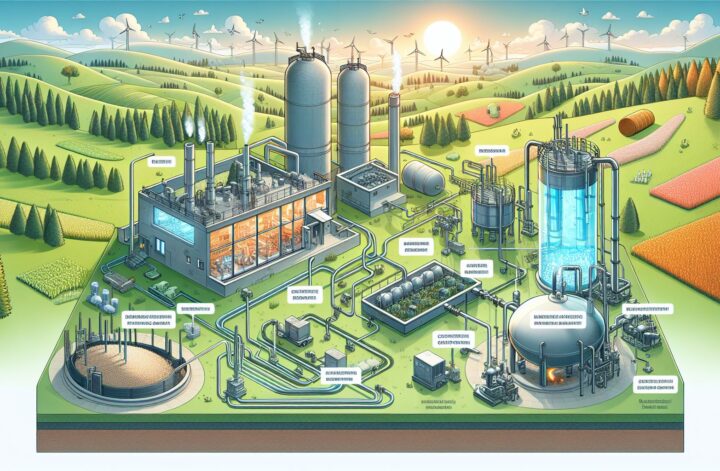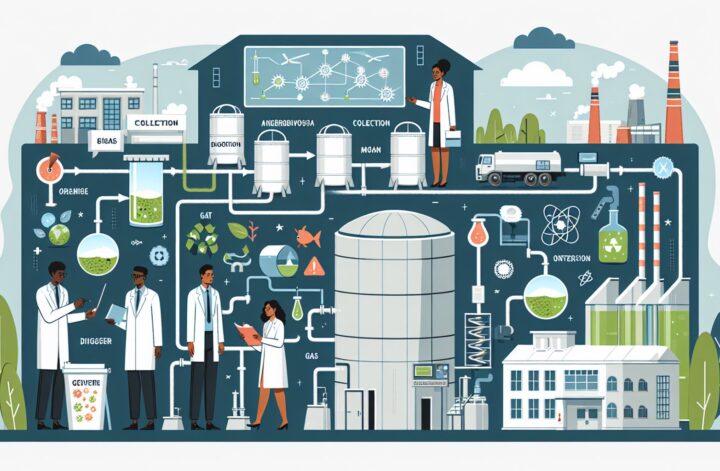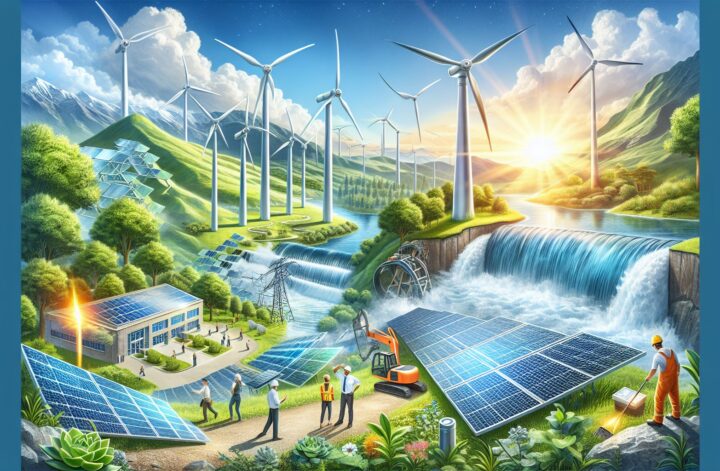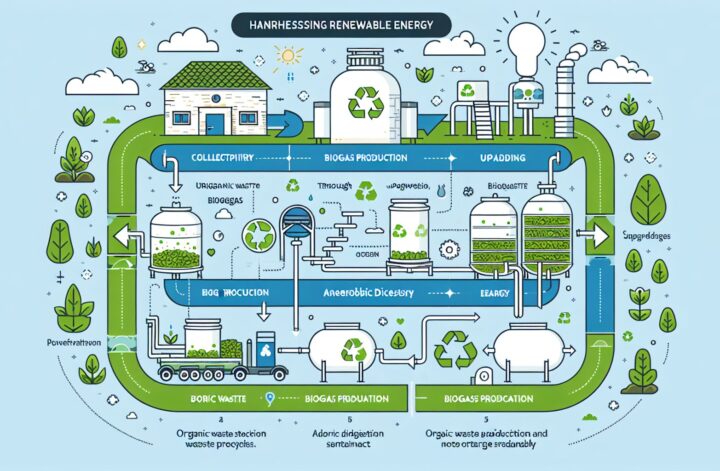In the face of a rapidly changing climate, the world is more invested than ever in developing and deploying renewable sources of energy. Of the many renewable energy technologies being explored, one stands out due to its dual benefits of waste management and power generation: biogas production and methane capture[^1^].
What is Biogas?
From a scientific perspective, biogas is a mixture of gases, mainly composed of methane (50 – 75%), carbon dioxide (25 – 50%), and other trace elements. This gas is produced when organic matter, such as agricultural waste, manure, plant material, green waste, food waste, or sewage, is broken down in an oxygen-free environment, a process known as anaerobic digestion[^2^]. This biogas can then be harnessed and used as a fuel source.
Process of Biogas Production: The Role of Anaerobic Digestion
The process of anaerobic digestion, key to biogas production, consists of four main stages: hydrolysis, acidogenesis, acetogenesis, and methanogenesis. Each stage plays a crucial role in breaking down complex organic matter into simpler compounds that ultimately result in the production of methane, our primary component of interest in biogas[^3^].
Hydrolysis
This is the first stage of anaerobic digestion and involves the breakdown of complex organic substances in the feedstock (such as carbohydrates, proteins, and fats) into simpler soluble organic compounds like sugars, fatty acids, amino acids, and glycerol.
Acidogenesis
Also referred to as the acidogenic phase, this is the next step where acidogenic bacteria convert the products from hydrolysis into volatile fatty acids, carbon dioxide, ammonia, and other byproducts.
Acetogenesis
This stage involves the transformation of the volatile fatty acids from the acidogenic phase into acetic acid, along with additional carbon dioxide and hydrogen.
Methanogenesis
Lastly, methanogenesis is the final stage of anaerobic digestion. In this phase, microorganisms known as methanogens convert the products of the previous phase into methane, carbon dioxide, and water.
Methane Capture
The process of methanogenesis can produce significant amounts of methane, which can be captured to be used as a renewable energy source. This allows for the creation of localized, decentralized energy production systems.
Towards this, anaerobic digester design and operation require careful configuration and management. Parameters such as hydraulic retention time (HRT), solid retention time (SRT), organic loading rate (OLR), and temperature are all important factors influencing biogas production and methane capture efficiencies.
Benefits and Challenges
By utilizing biogas and capturing methane, societies can tap into a renewable energy source that also aids in managing waste. The use of biogas can help displace fossil fuels, leading to a reduction in greenhouse gas emissions. It also offers a solution for treating organic waste and reducing landfill usage.
On the other hand, biogas production and methane capture also come with challenges. There are potential negative aspects such as ammonia toxicity, sulfide toxicity and the inhibition of anaerobic digestion, which can occur if the system is not appropriately managed.
Conclusion
While the harnessing of biogas and methane capture might not single-handedly solve the world’s energy and climate crisis, it can surely play a crucial role. When integrated alongside other renewable energy technologies such as solar, wind, and hydropower, biogas and methane capture can greatly aid us in the pursuit of a sustainable future.
References
[^1^]: U.S. Department of Energy, “Biogas Potential in the United States”
[^3^]: University of Michigan, “Anaerobic Digestion: Biogas Production and Odor Reduction”




